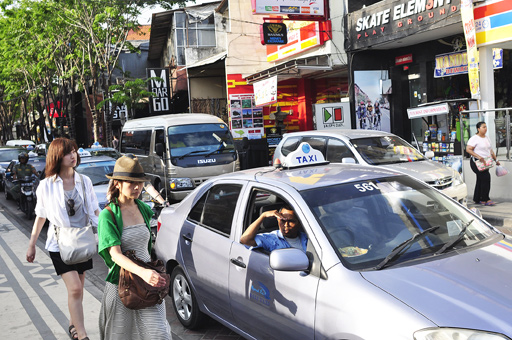the annual number of tourist arrivals from China to Indonesia last year increased 9.3 percent to around 750,000, from around 680,000 in 2012.
The number of Chinese tourists — the world’s biggest tourism spenders — visiting
Indonesia this year exceeded Australians, who over the years have been ranked third after Singaporeans and Malaysians.
Tourism and Creative Economy Minister Mari Elka Pangestu said that 11 percent of foreign tourists in the first four months of this year were from China, an increase of 30.42 percent year-on-year (y-o-y).
Overall, foreign tourist arrivals in the same period saw a 10.6 percent y-o-y increase to hit over 2.9 million, according to data from the Central Statistics Agency (BPS).
Data from the ministry shows that 324,344 tourists from China visited Indonesia in the January-April period of the year, more than 316,122 visitors from Australia.
The number of visitors from Singapore and Malaysia was 463,924 and 413,504, respectively.
“We saw encouraging growth in the number of Chinese tourists over the past years. China outpaced Japanese tourists two years ago and now they’ve outpaced Australia,” Mari told reporters.
According to the data, the annual number of tourist arrivals from China last year increased 9.3 percent to around 750,000, from around 680,000 in 2012.
 Tourists are seen walking in the Legian-Kuta area of Bali in this file photo.
Tourists are seen walking in the Legian-Kuta area of Bali in this file photo.
Tourism and Creative Economy Minister Mari Elka Pangestu said that
the country saw a 10.6 percent increase in the number of foreign tourist arrivals
during the first four months of this year and 11 percent of the tourists were Chinese.
“The increase was driven by the increased number of direct flights to Indonesia operated by Chinese airlines, including Hainan Air, Xiamen Air and Southern China Air,” Mari said.
She also said that there was growing interest from China’s younger generation to visit Indonesia, particularly for diving.
“This generation do their research online, which prompted us to launch a website in Mandarin last year,” she continued, referring to cn.indonesia.travel, which includes details on destinations as well as individual and group tours.
She said that in the future the ministry would increase marketing and promotion programs and initiate more cooperation with the East Asian country at the central government and provincial administration levels.
Despite the increasing number of tourists, the China Tourism Academy recently reported that Chinese tourists considered Indonesia to be one of the most unsatisfying destinations, due to infrastructure issues.
Indonesia was ranked 20th of 22 destinations in the Chinese outbound tourism satisfaction index for the first quarter of this year, slightly above Vietnam, which sits at the bottom of the list.
New Zealand topped the list, while other Southeast Asian neighbors ranked higher than Indonesia, namely Malaysia (16th), Thailand (seventh) and Singapore (fifth).
The index was based on indicators, such as railway stations, airports, power supply, customer service, tourism public service and tourism service quality.
Deputy Tourism and Creative Economy Minister Sapta Nirwandar said earlier that tourists had complained of a lack of decent infrastructure in remote areas.
In addition, Mari had earlier raised concern over Chinese travel agencies that charged tourists additional fees upon arrival, saying that the costs had been requested by Indonesian officials.
“The additional fees disappoint Chinese tourists. They are not placing the blame on their travel agencies, but on us [the government]. That’s why they aren’t satisfied with Indonesian tourism,” she said.
Separately, Indonesian Hotel and Restaurant Association (PHRI) chairwoman Wiryanti Sukamdani said Indonesia should take the opportunity afforded by the political situation in Thailand following the military coup.
“We are planning to visit Thailand in the coming days to initiate cooperation to reroute travel plans of concerned visitors to Indonesia, particularly ahead of the mid-year peak season, because a lot of foreign visitors have planned their trips a year ahead,” she said.
Data from BPS and the ministry also shows an increase in foreign tourists entering through Soekarno-Hatta International Airport in Jakarta (7.57 percent); Ngurah Rai International Airport in Denpasar, Bali (14.84 percent); and Hang Nadim Airport in Batam, Riau Islands (10.39 percent).
Mari said tourist arrivals would grow by double digits by the end of the year, citing the 10.6 percent increase in the first four-month period alone.

